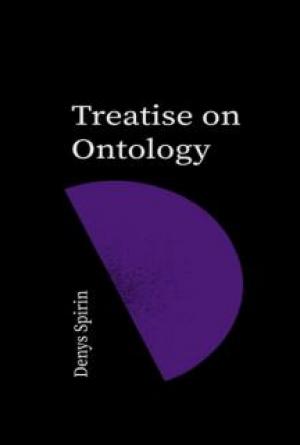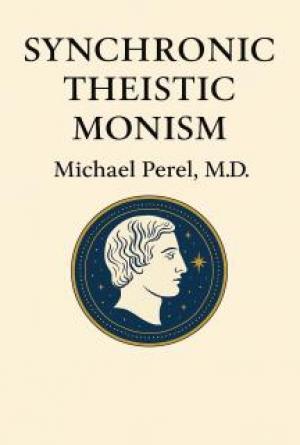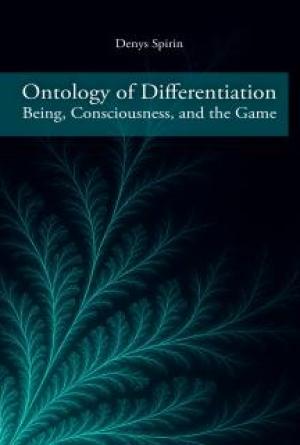Preface
13
About Ravi S. Iyer
15
I am I
17
Divine revelation gems from Chandogya Upanishad:
Chapter 6 (Dialogue between Uddalaka and Svetaketu)
19
Crisp Statements of Belief in God that is Compatible
with Science
32
One can be a Rigorous Scientist and a Believer in God –
Dr. Francis Col ins
38
God vs. Science, TIME, Nov. 2006, Dr. Col ins – a standard
bearer for scientists who believe in God
45
Some Famous Scientists’ Views on God and Limits of
Science
48
Burden of Proof Argument for Existence of God
57
Existential Intel igence & Other Human Intel igences
61
Does Presence of Pain and Suffering Imply That There is
No God?
64
Is Believing in a Personal God Childish?
66
Praying Openly While Doing a PhD
68
Epicurean Paradox – A Hindu Take
69
71
“The God Delusion”. What Does it Real y Mean?
75
Ignorant Prof. Dawkins Declares to CNN that on Death, It
Just Ends!
80
Wrong Science Being Taught in Some Faith Schools
84
Conversation on 'secular parenting' & religion between
USA scientist & Indian technologist
88
Why I shy away from comparisons between Physics
theories like Higgs field and deep spiritual philosophy like
Vedanta?
108
Has Science Refuted Religion Debate
116
Non-Scientific Knowledge Detection Kit – not Baloney
Detection Kit!
118
Fantastic Espousal of the Good of Religion by Honourable
Mr. Tony Blair in Nov. 2010 Debate
121
List of some other posts of iami1.wordpress.com
125
author
This document/book in either printed form (e.g. printed book
or printed sheets stapled/bound together) or electronic form
(e.g. pdf file or Word document file shared on the Internet) is
NOT FOR PROFIT for the author. But the publisher (if
publisher is not the author), printer, distributor or seller may
profit from it.
But printed form (hard copy) involves expenses. As of now, I
am actively exploring printing options without any self-
publishing company being involved. In this case I and I alone
am the self-publisher.
I am also exploring the possibility of using a self-publishing
company to print and sell this book. I do NOT want any
royalty. So I plan to explore that option with the publisher
where the book price is based on publisher cost + publisher +
distributor + book seller profit without any profit to me, the
author. I don't know whether this will be acceptable to the self-
publishing company.
However, I believe that if I want to distribute an ebook version
(soft copy) on Amazon, for example, I may have to accept
some royalty.
In cases where I will accept royalty money, I hereby commit to
contributors of content to this document/book as well as to
readers and others, that after tax is paid for such royalty, the
remaining royalty money will be used to pay for:
iami1.wordpress.com blog book 7
NOT-FOR-PROFIT blogs, other NOT-FOR-PROFIT social
media accounts and NOT-FOR-PROFIT domain(s) owned by
me,
b) AND/OR printing of this and/or other NOT-FOR-PROFIT
blogbooks of mine as complimentary copies distributed free of
charge,
c) AND/OR contribution to well known and reputed charity
organization.
I will also publicly share information on social media about
royalty money received for this blogbook, and how it was
spent, perhaps on an annual basis.
In other words, I will transparently ensure that I do NOT
PROFIT (financially) from sales of this document/book even if
I end up being paid some royalty money.
If I use a regular publishing or printing company to print this
document/book where I have to pay upfront for a print run of
some copies of this document/book, then I plan to use any
revenue I receive from distributors/sellers of this
document/book to recover that upfront cost that I would have
incurred. Any profit above that, after any tax payment involved
and related tax return preparation and any books of accounts
maintenance charges, will be used like in above royalty money
case, and its use will also be transparently documented like in
above case.
The approach explained above will be used for any other
possibilities for printing and distributing this document/book,
8 iami1.wordpress.com blog book
of this book.
April 2018
Ravi S. Iyer
Puttaparthi, Andhra Pradesh, India
Permission to freely reuse MY
CONTENT of this book
1. I hereby grant permission to anybody, anywhere to freely
reuse (including adaptation) any of MY CONTENT of this
book, provided they give a reference to this book to enable
interested persons to easily cross-check with the original
source. An example of such reuse would be somebody editing
part (or whole) of this book and then publishing and printing it
as their (derived) work. Such reuse (including adaptation) of
any of MY CONTENT of this book need not be limited to
NOT-FOR-PROFIT work – it can be done for FOR-PROFIT
work like publishing & printing a book for profit. I do NOT
WANT any royalty or profit from any such FOR-PROFIT
work reusing MY CONTENT of this book.
2. Any legal challenges/lawsuits filed/made by others (NOT
me) related to reuse of MY CONTENT of this book, against
people who did such reuse of MY CONTENT of this book, has
to be handled by them (people who reused MY CONTENT)
without any legal liability to me, except as required by Indian
law.
iami1.wordpress.com blog book 9
is just another case of the reuse that I have mentioned above in
point 1. So anybody is free (I grant them permission) to do
such translation of MY CONTENT of this book and publish &
print it, even FOR-PROFIT for them. I do NOT WANT any of
the profits they may make from this activity.
4. If at all somebody is interested in printing and selling any or
all of MY CONTENT of this book without any changes, then
that too is just another case of the reuse that I have mentioned
above. So anybody is free (I grant them permission) to do such
printing and selling of MY CONTENT of this book, even
FOR-PROFIT for them. I do NOT WANT any of the profits
they may make from this activity.
5. Note that this permission applies only to MY CONTENT in
this book and DOES NOT APPLY to small amount of content
I have used from elsewhere which I have made every attempt
to clearly show as having been taken from elsewhere or from
somebody else. If any content of this book is not shown as
having been taken from elsewhere or from somebody else,
then it can be presumed that that content is MY CONTENT.
6. I also state that I have ensured, to the best of my knowledge,
that all content of others (NOT MY CONTENT) in this book
including Wikipedia and Wikiquote content, is legally
permissible to include in this book and to be printed as part of
this book. Interested readers may want to visit my related blog
post: 'iami1 printed blogbook when sold at some (above-zero)
price: My analysis of copyright issues with usage of Wikipedia
content in it' here: http://tiny.cc/89hzsy [Long URL:
https://iami1.wordpress.com/iami1-printed-blogbook-my-
10 iami1.wordpress.com blog book
April 2018
Ravi S. Iyer
Puttaparthi, Andhra Pradesh, India
CC-BY-SA (additional) license for few
pages in this book
The following articles/posts in this book use significant
amount of text extracts from Wikipedia and Wikiquote:
1) Some Famous Scientists’ Views on God and Limits of
Science
2) Conversation on 'secular parenting' & religion between USA
scientist & Indian technologist
3) Why I shy away from comparisons between Physics
theories like Higgs field and deep spiritual philosophy like
Vedanta?
Note that Wikiquote’s Terms of Use link at the bottom of its
main page, https://en.wikiquote.org/wiki/Main_Page, leads to
https://wikimediafoundation.org/wiki/Terms_of_Use/en, which
states that "You are free to:" .. "Share and Reuse our articles and other media under free and open licenses."
Further, going by guidelines provided in
https://en.wikipedia.org/wiki/Wikipedia:Reusing_Wikipedia_c
iami1.wordpress.com blog book 11
https://en.wikipedia.org/wiki/Wikipedia:Text_of_Creative_Co
mmons_Attribution-ShareAlike_3.0_Unported_License, in
addition to my Free Reuse specification (for MY CONTENT
alone) given at the beginning of the book. In case of any
conflict between the two licenses/reuse specifications for these
articles/posts in this book, the Creative Commons Attribution
Share-Alike license (CC-BY-SA license) should be applied
(override the Free Reuse specification).
Therefore my above mentioned articles/posts in this book
having significant content from Wikipedia and Wikiquote, I
think, satisfy the conditions laid down by Wikipedia and
Wikiquote for sharing its content.
There may be some other articles/posts in this book which use
extracts of a few sentences from Wikipedia. I think that is
covered under Copyright Fair Use laws and so I have not
applied the Creative Commons Attribution Share-Alike license
(CC-BY-SA) for those articles/posts.
12 iami1.wordpress.com blog book
This book is based mainly on all the iami1.wordpress.com blog
post content which is authored mainly by this author (Ravi S.
Iyer) but has contributions from others too.
The document has posts on spiritual matters and also captures
my humble exploration of and views on the God & Science
conversation.
When teachings of religions or miracles mentioned in Holy
Scripture are referred, very limited or no mention is made of
any contemporary or near-contemporary religious
leaders/founders - the attempt is to emphasize spiritual
teachings/paths/philosophy/knowledge which may be viewed
as universal though the Hindu way of expressing them is used.
It must also be mentioned that a few posts are specific to
Hinduism.
I have written some of these posts in a hurried way. Further, I
have not had the time to spell check and grammar check all the
content in this book (and also the blog posts which form the
source content for this book). I request the reader’s kind
indulgence for spelling and grammar mistakes in this book.
My emphasis has been on getting the basic message across
even if the language is not without unintentional errors which
may irritate some readers but I don’t think will come in the
way of them understanding what I have written. I also have not
spent any time on polishing the language in this book.
At times, my usage of uppercase first letters for some words
may be inappropriate. I have chosen not to correct them as at
the time I composed some of the posts in the years 2011 to
iami1.wordpress.com blog book 13
choice for first letters of some words were my way then of
providing emphasis. I don’t want to disturb what I had written
then even though I realize that some such usage of uppercase
for first letter of word is incorrect English language usage. But
then the Internet does have a fair bit of incorrect English
language usage and so I did not feel odd or lonely while I used
that style in some of my posts then .
14 iami1.wordpress.com blog book
Last updated on 11thApril 2018
I (author of this document/book based on my iami1 blog) am
just a spiritual journeyman enjoying my spiritual journey.
I thought I could share some of my spiritual journey views
with interested folks on the net and so this small website and
blog.
Initially (till sometime around the beginning of 2014) I
preferred to be anonymous as I thought that would allow for
freer expression of sensitive views. I guess now I am
comfortable with expressing the views of the type expressed
here under my real name.
My name is Ravi S. Iyer and I am a blogger/social media
writer on spirituality and religion. I am a Physics graduate
from Ruia college, University of Bombay (Mumbai), and a
retired international software consultant, living in Puttaparthi,
Andhra Pradesh, India.
My spirituality and religion blogs
1) This blog, https://iami1.wordpress.com, is a humble
exploration of and views on the God & Science conversation
(done after August 2011), and little more. When teachings of
religions or miracles mentioned in Holy Scripture are referred,
as far as I recall, no mention is made of any contemporary or
near-contemporary religious leader/founder – the attempt is to
emphasize spiritual teachings/paths/philosophy/knowledge
which may be viewed as universal though the Hindu way of
iami1.wordpress.com blog book 15
2) http://ravisiyer.blogspot.com is a blog about Bhagawan Sri
Sathya Sai Baba and other spiritual & religious matters.
For more about me including my software related blogs please
visit: http://ravisiyer.blogspot.in/p/about-ravi-s-iyer.html.
Above content is based on this webpage:
https://iami1.wordpress.com/about/
16 iami1.wordpress.com blog book
First posted around Sept. 2011
Who am I?
This is THE Great Existential Question of man.
Great Spiritual Masters and Sacred Scripture tell us:
Koham? Soham.
Who am I? I am He.
Some put it differently. They say:
Who am I? I am I.
AS SIMPLE AS THAT!!!
But it is simple only from an intellectual appreciation, thinking
‘head’ point of view. To REALLY UNDERSTAND IT one
has to understand from the ‘feeling’ heart, from the ‘feeling’
depth of one’s being, in the unchanging still awareness of our
‘feeling’ existence.
In fact, if the understanding is only intellectual then it can be
viewed as a ridiculous statement and dismissed out-of-hand as
something meant only for idiots & fools who are blinded by
their beliefs. The ultimate answer to existence then can get
grotesquely misunderstood.
The ‘feeling’ heart understanding may take months and years
and decades and even multiple lifetimes, they say! Taming
iami1.wordpress.com blog book 17
& Jealousy (Maathsarya) comes first. That ensures a calm
beingness, a nearly thoughtless but ‘feelingful’ / ‘beingful’
state which allows one to unravel and disentangle the Body-
Mind-Ego Delusion from one’s existential reality. Then and
then alone comes REAL UNDERSTANDING, they say.
That, they say, is the spiritual journey to the reality of not only
one’s existence but that of ALL EXISTENCE which is
projected from the depths of our own being. They vehemently
say, contemptuous of the ignorant and dismissive disbelief of
most materialists and most material scientists, that this ultimate
existential reality IS NOT OUTSIDE US in the outer/sensory
material universe but within the depths of our own being. And
the time taken for this journey to our spiritual center, they say,
varies widely from person to person.
And some Great Masters say that at the very depth of our
being we are Pure Love!!! That’s it, they say. Nothing else
exists but Pure Love. And to reach that understanding, that
existential experience, that enlightenment, they say, take the
path of Service (Seva) with Pure Love (Nirmal / Nishkaam
Prema).
Faith in these sacred statements goes a long way in unraveling
the Great Illusion (Maha Maya) that we are trapped in. The
other great virtue is Patience – Patience of a tall order –
Patience of months and years and even lifetimes. Shraddha and
Saburi i.e. Faith and Patience, they say, can lead one to the
goal of direct experience of existential reality (Atma
Saakshaatkaar).
18 iami1.wordpress.com blog book
LOVE. As simple as that!!! From Outer Expression of Pure
Love to Inner Experience of Divine Love.
Some time ago I heard some group sing,
“Love is the answer; Now, what was the question?”
What a Mahavaakya (Great pithy statement)! Perhaps it is at
the level of the Great Upanishadic Mahavaakyas like Thath
Thwam Asi (You are That).
Above post’s link: https://iami1.wordpress.com/
Divine revelation gems from
Chandogya Upanishad: Chapter 6
(Dialogue between Uddalaka
and Svetaketu)
Posted on April 8th 2018
Last updated on April 26th 2018
The Upanishads (also called Vedanta) are toward the end of
the Vedas, the holy scripture of the Hindus. I must also say
here that I am a Hindu. It is my fervent belief that these
Upanishads contain wonderful gems of divine revelation about
the mysteries of the universe and about divine power (formless
God). Given below are some such wonderful gems of divine
revelation from Chandogya Upanishad,
https://en.wikipedia.org/wiki/Chandogya_Upanishad.
iami1.wordpress.com blog book 19
I have included extracts of Chandogya Upanishad from Prof.
Max Muller’s Sacred Books of East,
https://en.wikipedia.org/wiki/Sacred_Books_of_the_East,
(spelt as Khândogya Upanishad in it) as that is in the public
domain. It can be viewed from the index page here:
http://www.sacred-texts.com/hin/sbe01/index.htm. I have used
the term [MM, SBE] below to refer to Prof. Max Muller’s
above mentioned book.
Readers who would like to see the Sanskrit verses in
Devanagari (Sanskrit) script of Chandogya upanishad can do
so here:
http://www.astrojyoti.com/pdfs/DevanagariFiles/ChandogyaU
panishat.pdf. Note that Chapter 6 starts from pdf file page 50
but which has page number printed as 130 as the pdf file seems
to be an extract from a larger file. I have also uploaded this pdf
file on my blog here:
https://iami1.files.wordpress.com/2018/04/chandogyaupanishat
-sanskrit.pdf as Chandogya Upanishad Sanskrit text is in the
public domain.
The shlokas (verses) below have the original Sanskrit verses in
Roman (English) script followed by Max Muller, SBE English
translation of it.
My comments on the shlokas (verses) below have been
strongly influenced by a near-contemporary spiritual master’s
commentary on Chandogya Upanishad. As I want to
emphasize spiritual teachings/paths/philosophy/knowledge
which may be viewed as universal though I have used the
Hindu way of expressing them, I have chosen not to mention
the name of this near-contemporary spiritual master.
20 iami1.wordpress.com blog book
Chapter 6, Part 1
Verse 3: Yenaashrutam shrutam bhavati amatham matham,
avijnaatham vijnaatham iti katham nu bhagavah sa aadesho
bhavathithi.
[MM, SBE]: (‘His father said to him: ‘Svetaketu, as you are so
conceited, considering yourself so well-read, and so stern,)
have you ever asked for that instruction by which we hear what
cannot be heard, by which we perceive what cannot be
perceived, by which we know what cannot be known?’
Verse 4: Yathaa somya ekena mrt-pindena sarvam mrnmayam
vijnaatham syaath vaachaarambhanam vikaaro naamadheyam
mrttikethi eva sathyam.
[MM, SBE]: (‘What is that instruction, Sir?’ he asked. The
father replied:) ‘My dear, as by one clod of clay all that is
made of clay is known, the difference being only a name,
arising from speech, but the truth being that all is clay’
Verse 5: Yathaa somya ekena lohamaninaa sarvam
lohamayam vijnaatham syaath vaachaarambhanam vikaro
namadheyam lohamithi eva sathyam.
[MM, SBE]: And as, my dear, by one nugget of gold all that is
made of gold is known, the difference being only a name,
arising from speech, but the truth being that all is gold
Ravi: My understanding of the above verses is that there is an
underlying core being-ness (or existence-ness or is-ness) which
is the vital aspect of all existence. It is this vital being-ness
which is manifested in different ways and appears as the
iami1.wordpress.com blog book 21
by subtle intelligence.
Chapter 6, Part 2
Verse 1: Sath eva somya idam agra aaseed ekam
evaadvithiyam, tadd haika aahuh, asad evedam agra aaseed
ekam evaadvithiyam, tasmaad asathah saj jaayatha.
[MM, SBE]: ‘In the beginning,’ my dear, ‘there was that only
which is (τὸ ὄν), one only, without a second. Others say, in the
beginning there was that only which is not (τὸ μὴ ὄν), one
only, without a second; and from that which is not, that which
is was born.
Verse 2: Kuthas tu khalu somya evam syaath ithi hovaacha
katham asathah saj jaayethethi, sath thu eva somya idam agra
aaseed ekam evaadvithiyam.
[MM, SBE]: ‘But how could it be thus, my dear?’ the father
continued. ‘How could that which is, be born of that which is
not? No, my dear, only that which is, was in the beginning, one
only, without a second.
Page 1 Page 2 Page 3







